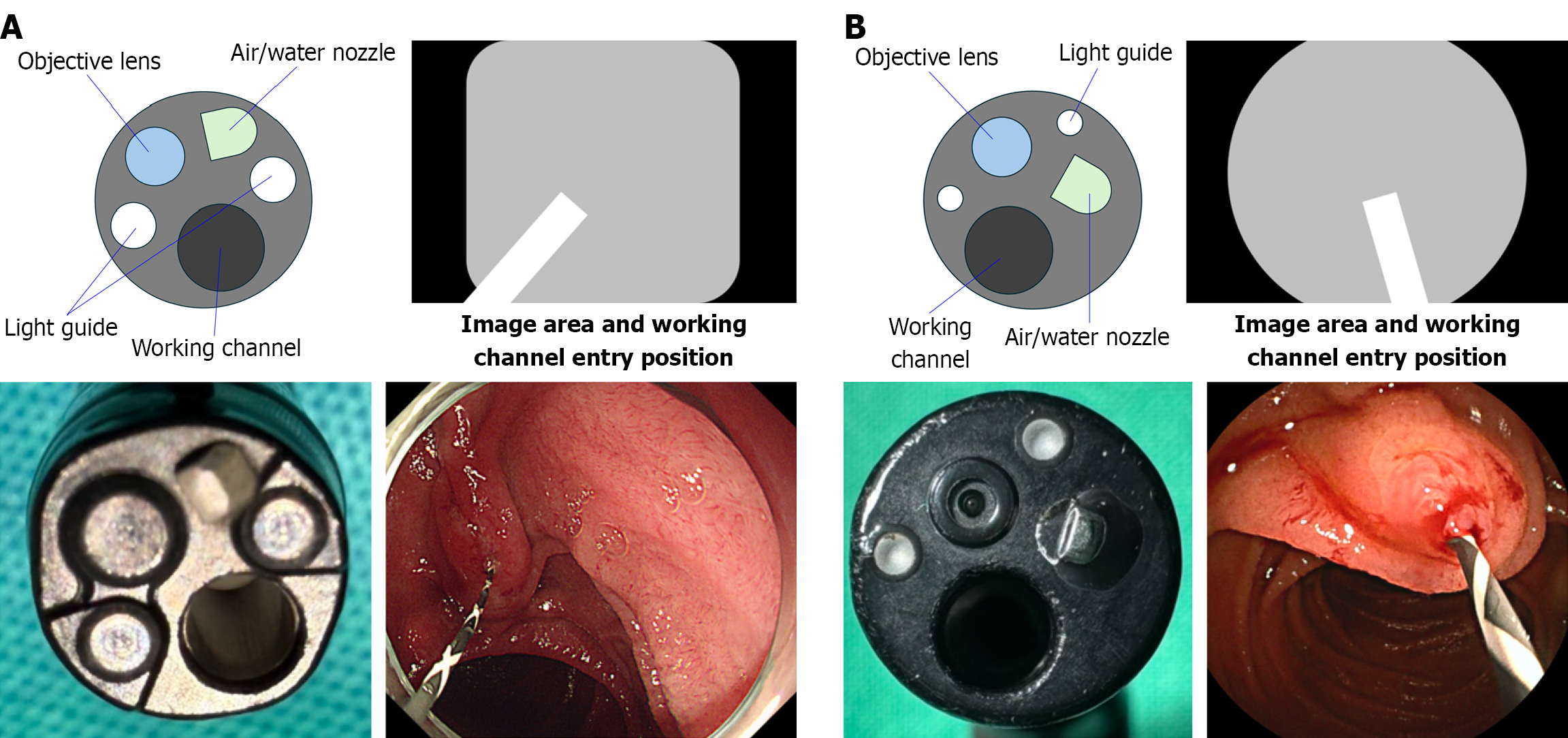Copyright
©The Author(s) 2025.
World J Gastroenterol. Nov 7, 2025; 31(41): 111022
Published online Nov 7, 2025. doi: 10.3748/wjg.v31.i41.111022
Published online Nov 7, 2025. doi: 10.3748/wjg.v31.i41.111022
Figure 1 Study flow diagram.
ERCP: Endoscopic retrograde cholangiopancreatography; SAA: Surgically altered anatomy; SBE: Single-balloon enteroscopy; DBE: Double-balloon enteroscopy.
Figure 2 Illustration of intubation.
A-E: Using single-balloon; F-J: Using double-balloon enteroscope.
Figure 3 Differences in working channel orientation between single-balloon and double-balloon enteroscope.
A: In the single-balloon enteroscope, the working channel is oriented toward the 8 o’clock position, which aligns favorably with the bile duct axis in patients with a native papilla; B: In contrast, the double-balloon enteroscope features a working channel positioned at approximately the 5:30 direction, requiring papillary repositioning for optimal cannulation. The orientation of the working channel, which differs between the two enteroscope types, may significantly impact the technical ease and approach required for biliary cannulation based on the anatomical configuration.
- Citation: Han SY, Yang MJ, Lee KJ, Lee J, Park SW. Comparison of clinical outcomes for single- and double-balloon enteroscope-assisted endoscopic retrograde cholangiopancreatography in patients with surgically altered anatomy. World J Gastroenterol 2025; 31(41): 111022
- URL: https://www.wjgnet.com/1007-9327/full/v31/i41/111022.htm
- DOI: https://dx.doi.org/10.3748/wjg.v31.i41.111022















